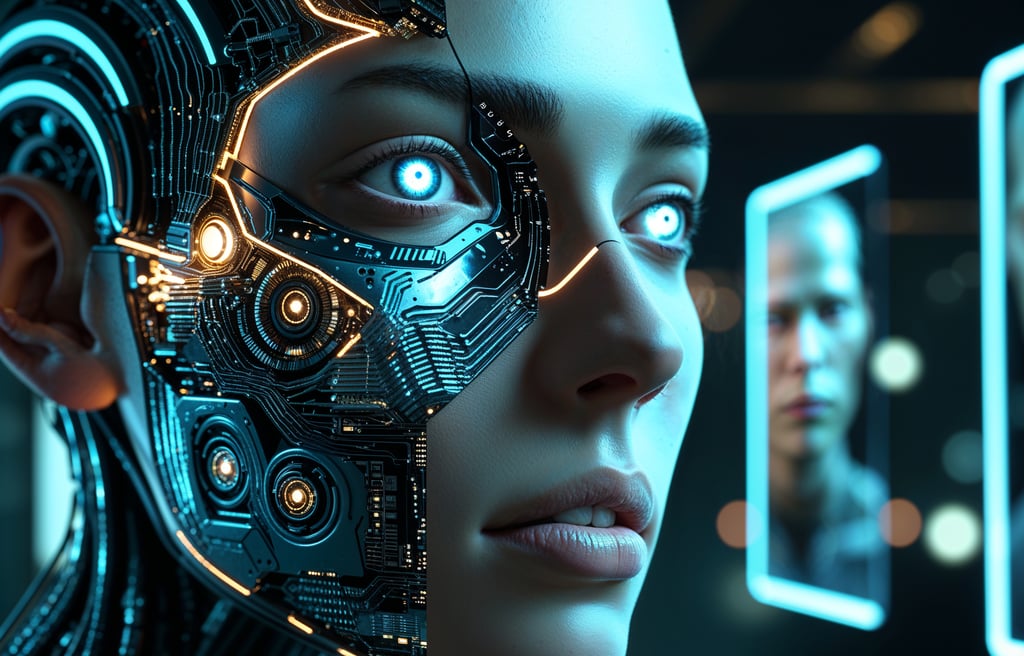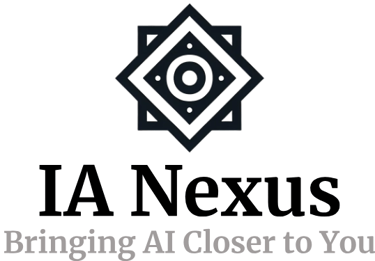4 AI Tools That Are So Good, It's Almost Creepy
From hyper-realistic deepfakes to AI therapists that ‘get you,’ these 4 cutting-edge tools are so advanced, they’ll give you chills. Discover the eerily human capabilities of today’s AI—and why they might be crossing the uncanny valley.
Alexander Hart
4/2/20254 min read


Introduction to Uncanny AI
The rapid advancement of artificial intelligence (AI) technology has led to the emergence of what we term "uncanny AI." This phenomenon refers to AI tools that emulate human behaviors and cognitive processes to such a degree that they can evoke feelings of discomfort or eeriness among users. The uncanny valley effect, a concept widely discussed in robotics and AI, describes the unsettling sensation experienced when an AI system appears almost human but still lacks certain qualities inherent to genuine human interaction. Understanding these uncanny AI tools is essential as they increasingly integrate into our daily lives.
One prominent example of such technology is ChatGPT-4o, an advanced conversational AI that can generate human-like text responses. Users often find themselves engaging with this tool in ways that blur the lines between human and machine interaction. The ability of ChatGPT-4o to understand context, nuances, and even emotions enables it to construct responses that can feel surprisingly authentic, stirring curiosity and apprehension in its users.
Another noteworthy instance is Midjourney v6, an AI-driven art generation tool that creates vivid visuals based on textual input. Artists and designers increasingly use it to brainstorm ideas and produce innovative designs quickly. However, the startling realism of the outputs can elicit an uncanny reaction, as viewers grapple with the question of authorship and the nature of creativity in the digital age.
As we explore the various AI tools that demonstrate uncanny capabilities, it becomes increasingly important to acknowledge their implications for society. By recognizing the nuances and complexities of these tools, we prepare ourselves for navigating a future where interactions with AI are not only common but pervasive. The intrigue surrounding uncanny AI compels us to consider not just their benefits but also the ethical and psychological ramifications of our evolving relationship with these technologies.
ChatGPT-4o: Conversations That Feel Human
ChatGPT-4o represents a significant advancement in conversational AI, enabling interactions that can feel profoundly human-like. One of its core capabilities lies in understanding context; this allows the AI to comprehend the nuances of conversation, such as tone and subject matter, facilitating a more organic exchange. By maintaining a context over multiple interactions, it can tailor responses that resonate with users, which is particularly advantageous in settings like customer service or therapy.
Moreover, the emotional response framework integrated into ChatGPT-4o allows it to detect and respond to emotional cues from users. This ability can be transformative in mental health applications, where empathetic interactions are crucial. For instance, when a user expresses feelings of sadness or anxiety, ChatGPT-4o can generate appropriate responses, fostering a supportive environment. This capability not only enhances user satisfaction but also encourages individuals to engage openly with AI in sensitive contexts.
Despite its remarkable functionality, some users may find the human-like interactions of ChatGPT-4o somewhat unsettling. The uncanny valley effect, where AI approximates human behavior closely yet is still noticeably artificial, can evoke discomfort. This reaction prompts important discussions regarding the ethical implications of using such advanced technology. Furthermore, privacy concerns are paramount as these conversational AIs often process personal information. Users must understand how their data is used and protected while engaging with AI tools like ChatGPT-4o, which are increasingly integrated into everyday life.
The impact of ChatGPT-4o extends across various domains, making it a formidable tool for businesses and individuals alike, yet it also necessitates careful consideration of the ethical and privacy issues surrounding artificial intelligence and its growing capacity to emulate human conversation.
Midjourney v6: Art That Imitates Life
Midjourney v6 exemplifies the remarkable capabilities of artificial intelligence in the realm of digital art. This AI art generator is designed to create hyper-realistic images that closely mimic real-life photographs based on user-provided prompts. As the technology has evolved, Midjourney v6 has raised intriguing questions concerning the intersection of creativity and imitation. Users can input varied prompts, and the AI responds by generating art that is not only visually stunning but also strikingly true to reality, leading to discussions about what constitutes artistic originality.
The level of detail and the nuanced understanding of visual aesthetics exhibited by Midjourney v6 signifies a leap in AI-driven creativity. For example, when users prompt the AI with specific themes or subjects, it produces images that often defy the distinction between photograph and digital creation. Artworks generated by Midjourney v6 are capable of eliciting emotional responses akin to those inspired by traditional photography, effectively demonstrating how technology can redefine artistic boundaries. This blending of art and artificial intelligence prompts critical reflection on the role of the artist in a digital age where machines can replicate human creativity.
However, with these advancements come important ethical considerations. The ownership of AI-generated art raises questions of originality and intellectual property. Many artists and creators express concerns about AI tools like Midjourney v6 potentially undermining the value of human-created art. As these systems generate images that can closely resemble the style of established artists or even mimic familiar subjects, the implications for the art industry must be scrutinized. Artists may find themselves navigating a complex landscape where their traditional techniques are challenged by machines that can generate similar art without a human touch. The ongoing dialogue about these ethical implications is essential as we embrace the technology while considering its impact on artistic integrity.
ElevenLabs Voice Cloning: The Sound of Authenticity
ElevenLabs has emerged as a frontrunner in the realm of AI voice cloning, captivating users with its ability to create hyper-realistic voice replicas. Utilizing advanced machine learning algorithms, the tool meticulously analyzes various facets of human speech, such as tone, pitch, and cadence, to produce voice clones that are strikingly authentic. This technology leverages vast datasets from real human interactions, allowing it to capture the subtleties of voice modulation and emotional expression, which are critical in delivering speech that not only sounds real but feels genuine.
The implications of voice cloning technology are profound, presenting both opportunities and challenges. On one hand, ElevenLabs voice cloning can enhance creative endeavors, enabling artists and content creators to produce work without the limitations posed by traditional voice talent availability. Moreover, this tool can aid in language learning and accessibility, providing a lifelike sound that aids comprehension and engagement. However, the allure of such advancements is tempered by serious concerns surrounding misinformation and identity theft. The ability to replicate someone's voice raises significant ethical questions, as malicious actors could exploit this technology for fraud or deception, effectively eroding trust in auditory communications.
As we venture further into an age where voice cloning technology is becoming increasingly accessible, individuals are prompted to evaluate their perceptions and trust levels in AI-generated communications. It is vital to consider scenarios where voice clones might be used, such as in critical communication, financial transactions, or even artistic collaborations. Would one feel secure relying on a message delivered by a voice clone? The line between genuine and artificial continues to blur, leading to an ongoing discussion about the future of our interactions in an AI-driven world, particularly in sensitive contexts.
Insights
Stay updated on AI news and trends today.
Learn
© 2025. All rights reserved.
